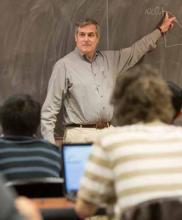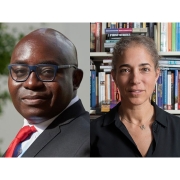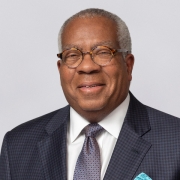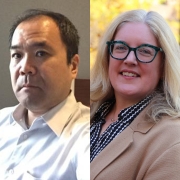Penn Arts & Sciences Magazine: Scientists-In-Training

The first goal for most aspiring scientists and engineers is developing a research path—not creating a proposal to pitch to a room full of people. That’s where the Vagelos Integrated Program in Energy Research (VIPER) differs. The dual-degree program, founded through the generosity of Trustee Emeritus P. Roy Vagelos, M.D., C’50, Hon’99, and his wife Diana, is housed jointly between the School of Arts and Sciences and the School of Engineering and Applied Science. It is designed to not only get students involved in exploring energy research at an undergraduate level as soon as possible, but to prepare them to introduce their ideas to the outside world.
“How do you go about talking to people about science and engineering? It’s not something students magically learn,” says Carl V. S. Patterson Professor of Chemical and Biomolecular Engineering John Vohs. “They don’t know how to create an effective visual figure that’s going to be informative but also catch someone’s eye. So when we need to learn about presentation, we actually go out and bring in someone from the library. Even though they aren’t scientists, they can help in so many other ways.”
In order to ease freshmen VIPER students into a rigorous interdisciplinary curriculum, the program has an on-ramp-to-research seminar series that takes place during the second semester of freshman year, and continues through the first semester of sophomore year. Vohs acts as co-instructor of the seminar, alongside Professor of Chemistry Andrew Rappe and VIPER managing director Kristen Hughes. Throughout the first half of the semester, professors from a wide range of disciplines visit the class to speak to students and aid them in choosing their initial research path. By the time summer rolls around, students pair themselves with a faculty mentor who oversees their first block of research. Research choices run the gamut, from physics to architecture to chemical engineering.
“The summer research period is beneficial not only as a means to excel, but also to explore new areas of certain topics,” says Thomas Eng, C’17, ENG’17, projected mechanical engineering and architecture major. “It gave me proper lab experience and directed me toward a path I think will be more suited for me in the future.”
One of VIPER’s primary goals is to prepare students to approach research questions from a variety of different perspectives—and then be able to talk about it. “When undergrads think of energy research, they tend to think of applications: solar cells and wind turbines,” says Vohs. “But really you need to understand the fundamentals, and that means focusing on one very small bit of an overall problem and being able to communicate about it.”
In order to foster improved communication, students are required to give presentations on their initial findings. Once they have completed their summer research and have had the opportunity to formulate concrete results with their new faculty mentors, they give a follow-up presentation as a means of charting their improvement and examining what they’ve learned throughout the process.
A small class size is central to ensuring individual attention to students. “I didn’t really expect how relaxed VIPER would be,” says Carol Wang, C’17, ENG’17, who worked on a cross-coupling reaction in Alan MacDiarmid Term Professor of Chemistry Patrick Walsh’s lab, and credits seminar co-instructor Andrew Rappe with helping her connect with her mentor. “We learn a lot in the VIPER seminar, but we also have a ton of fun.”
As students’ research progresses, they will also have the opportunity to access the state-of-the-art labs at Pennergy, the Penn Center for Energy Innovation. Formed in 2009, the center’s mission is to bring together world-class researchers to solve scientific and technological problems, enabling the efficient use of current energy sources, the practical use of more sustainable energy, and the conversion of energy to different forms.
“The VIPER experience is like no other,” says Gautam Nagaraj, C’17, ENG’17, who spent the summer working with Professor of Physics and Astronomy Marija Drndić in her lab. “I got to work alongside Ph.D. students and post-doctoral fellows to design and build a microfluidics cell for DNA-sequencing experiments. There is no doubt my experience will play an important role in opening up the opportunities I have in the future to contribute to the energy solution at large.”





